#this month we celebrate a bountiful harvest
Explore tagged Tumblr posts
Text

I'm calling this "Nature's Goodness."
#this month we celebrate a bountiful harvest#thanksgiving#cornucopia#horn of plenty#humor#junk food#white board#doodle#dry erase#whiteboard
7 notes
·
View notes
Text
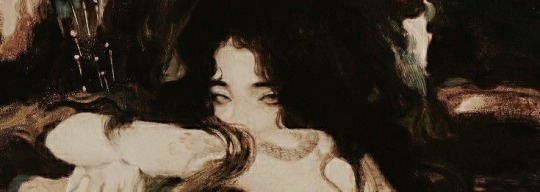
Cult 0T7 fic.
What happens when one’s sin is too big for the highest deity to forgive? Seven individuals who have committed the most hideous crimes, show up at your town; paying the holy leader of the cult heaps of money to have you cleanse them of their sins. Whatever happens in a cult, stays in a cult.
Contains: cult themes, public sex, rough sex, members fighting over who can fuck y/n first, members are driven crazy by lust, double penetration in pussy, triple penetration ass and pussy, double blowjob, attempt at trice blowjob but fails, riding, idk what else
Admin note: I deliberately kept any details and references to any religion as vague as possible.
━━━━━━━━━━━━━━━━━━━━━
It was the last full moon of the month, a time for celebrating the harvest and honoring the God that you and the people you cherished worshipped religiously, night to day, day to night. A special night, as it was only on this night where mortals were granted forgiveness for sins that wouldn’t be excused by human beings; sins that were too vile for any mortal to overlook, but a sin that a God could forgive, so long as you repented.
So long as you repented…
…and had sexual intercourse on the last full moon of the month, a practice that all of you were willing to participate in. Word got around quick and sex tourists desperately tried to participate, but your town shouldn’t be seen as some sort of sex theme park. No, this was a sacred ritual that you and the other people in the town participated in, to the point where you all saw it as an act of tradition without batting an eye at the freakiness of it all.
The head of the cult would never steer you wrong, he knew what was best for the town.
“Seven individuals have come to partake in our tradition tonight.” The wise man spoke, a smile plastered on his face. “We know that seven is a sacred number, don’t we? This cannot be a coincidence! It is the will of the Gods that this will be done. Our town will prosper, I assure you all of this.” He spoke to the crowd, his eyes gleaming in the light of the candle and fire.
He looked back at you, placing a hand on your shoulder.
“Are you ready, my child?” He led you to the hot springs. “The Gods will surely be pleased with this outcome, as will we all be once the harvest is bountiful in our town.”
You were more than ready to go through with this, the Gods would bless the town.
You left the man behind as you were welcomed by the two elder sisters who prepared you for the tradition; scrubbing your body, soaping it, and then softening your skin with a blend of almond and coconut oil. Your hair was dried before they wrapped the silk robe around you, a hug and a kiss on the cheek given by one of the two, before you walked off and made your way to where the tradition would take place.
There was an open space in the far back of the town; far enough to scare off tourists but near enough for interested townspeople to come and have a look. It was surrounded by torches and candles, an altar placed at the center of the open area, decorated with roses, lilies, and daisies. A swing hung from a tree, a bed of soft furs and blankets a few feet from the swing, and water flowing nearby.
Seven wooden chairs were lined up in front of the altar, each seat occupied by seven strangers, before you could have a closer look, the leader of the cult spoke up.
“Kim Namjoon, Kim Seokjin, Jung Hoseok, Min Yoongi, Park Jimin, Kim Taehyung, and Jeon Jungkook, you are all welcome here.” The man glanced over to the crowd before looking back at the men. “May the Gods be gracious to us all, for we are all pure-hearted, and our intentions are true and good, we come together for one goal and one goal only: the will of the Gods!” The audience clapped, some of the older ones praying under their breath.
You sat on the furs, the silk robe still on, and you watched the seven men walk down the path that the people created for them. It wasn’t something you’d normally think about, but you couldn’t help but notice how handsome each of them were, every man holding a unique feature that made you stare.
You laid back on the furs, a pillow under your head, and waited, watching as they undressed themselves and like a pack of wild animals, they pounced on you. Hands roamed all over your body, fingers pinching and twisting your nipples, fingers rubbed your clit, lips sucked at your neck, hands caressed your thighs, tips were pushed at your entrance before you were forcibly pulled back by another member who was eager to fuck you first.
They argued, they bickered, they fought, they shoved each other, your body bounced back and forth as they wrestled and tried to pull you into their arms, Yoongi grabbed hold of you and dragged you across the furs and blankets, before the rest of the men piled on top of you, two cocks pushed into your mouth while another cock rubbed against your face.
You looked up to see that the three cocks belonged to Taehyung, Jungkook and Jimin. In your left hand, you held Namjoon’s cock, while your right hand held Hoseok’s cock. There were so many cocks that you were starting to lose count.
You felt Yoongi’s tip push in before it was abruptly pushed away by Seokjin’s tip, their cocks pushing and rubbing against each other before both slid into your pussy. You let out a gasp, mouth wide open, cocks slipping out, before they were hastily pushed back into your mouth. The two men inside of you fucked you in tandem, their cocks brushing against each other.
You took shaky breaths through your nose, focusing on sucking their cocks, while also focusing on rubbing the cocks that you held in your hands. Seokjin held onto your hips while Yoongi’s fingers dug into your ass, them both pushing you back and forth on their cocks, bouncing you back and forth. Taehyung who was rubbing his cock against your face, felt himself grow impatient, and pushed himself into your mouth, but when he realized it wouldn’t fit, he pulled back out.
The citizens watched, some bursting into tears, others clapping, a few cheering, the majority chanting and praying, but they were all proud of the ritual being carried out so far. They’d make sure to praise you after you’re done, bring you gifts and your favorite treats as a reward for your outstanding work.
You felt Seokjin’s pace turn sloppy and frantic, his moans louder than before, and not even a second later, he came. He filled you up first, panting, beads of sweat dripping down his forehead. He stayed inside of you for a while longer, until he finally pulled out.
Yoongi didn’t allow anyone to take Jin’s place, he continued fucking you, his pace fast and hard. You couldn’t help the lewd noises that slipped past your lips, and you didn’t care how loud you were. The only thing on your mind was the cock slamming into your pussy.
Jimin switched places with Taehyung, now his cock in your mouth while Jimin stepped back and enjoyed the show. Jungkook tilted his head back as he pushed his hips further towards your face, digging his cock deeper into your mouth.
Soon after, Yoongi’s seed spilled inside of you, and you clenched around his cock. He groaned, biting down on his lip, pulling out of you. Your pussy was only left alone for a few seconds before Hoseok eagerly took the spot. He sat down next to you before he pulled you onto his lap, earning some annoyed groans and glares from the men as their cocks slipped out of your mouth and hands.
Hoseok lifted you up and down, bouncing you on his cock, and he held a smile on his face at how soaking wet and warm your pussy was. Namjoon took the opportunity to ram his cock into your needy pussy, both him and Hoseok fucking you in tandem, and the pleasure was too much. You screamed and moaned, the cocks stuffed inside of you were making you feel lightheaded. You could feel Hoseok’s tongue drag over your neck as Namjoon kneaded your chest, your breasts filling his large hands.
Your ears rang, your mind went blank, and everything felt blurry, but the men continued to fuck you. Your head tilted back as Namjoon and Hoseok changed the rhythm, Namjoon pounding into your pussy while Hoseok slowly fucked into you. The three of you continued to go on like this, the cocks stuffing you to the brim, until Hoseok and Namjoon both came, their seed filling you up.
One of the sisters on standby, stepped in to offer you a cup of water, before she bowed and stepped back, not wanting to stand in the way of you finishing. You took a minute to breathe and catch your breath, before the three youngest were left.
You were taken away from the blankets and brought to one of the chairs, where Taehyung sat down and pulled you onto his lap. He held you into place as he pushed his errection into your ass, stretching your hole and earning a squeak from you. As he fucked your ass, Jungkook and Jimin stepped over. Jungkook went straight for pushing his cock into your pussy, while Jimin decided to make you suck his cock for a few minutes before he also pushed in his cock into your pussy.
The chair creaked and shifted under the weight and force of the three men fucking you relentlessly, but you couldn’t even hear it, your hearing fuzzy and your sight blurry.
“Oh! Oh!” You gasped, eyes wide and mouth agape, unable to do anything but allow the three men to use your holes however they pleased. It was too much— too much pleasure at the same time, but it was so good, too good. Drool dripped down your chin, your hair a mess, your robe abandoned somewhere on the ground. First Taehyung would thrust, before pulling out, which was when Jimin pushed in, along with Jungkook, before they’d switch their pace and start alternating again.
Taehyung was the first to come, his seed spilling inside of you, and as soon as he pulled out, it was when Jimin and Jungkook came as well, filling you up with their seed.
You were left panting, drool dripping from your mouth and tears in your eyes. The sisters stood by your side and wrapped a warm towel around you. Your legs were shaking, and you felt wobbly so you sat back down, shit, you needed a break after that.
“Now I declare, that all of you have been cleared of your sins…
Jungkook, Battery
Jimin, Extortion
Taehyung, Kidnapping
Seokjin, Murder
Namjoon, Burglary
Yoongi, Cybercrime
Hoseok, Arson…”
#bts smut#bts requests#bts x reader#bts smut requests#bts fanfic#bts smut fanfic#taehyung smut#jungkook smut#jimin smut#namjoon smut#seokjin smut#yoongi smut#hoseok smut#bts ot7 smut#bts x female reader
1K notes
·
View notes
Text
Harvest Moon - September 28, 2023
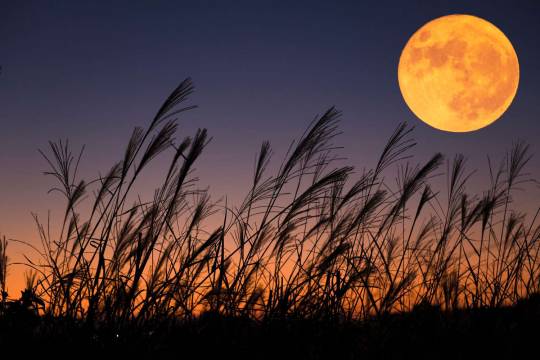
The summer heat might be hanging on, but it's time to get excited for autumn shenanigans all the same. Grab your canning supplies and your favorite cider mug - it's time for the Harvest Moon!
Harvest Moon
The Harvest Moon is the name given to the full moon which occurs closest to the autumnal equinox. It does not matter whether the moon occurs before or after the equinox or in which month it falls. In some years, this means the Harvest Moon may occur in October, in which cause the September moon might go by the name of Corn Moon or Rice Moon, depending on where you are.
In 2023, the Harvest Moon falls once more in the month of September. The same will happen in 2024, when the Harvest Moon will also be a supermoon! However, in 2025, the September moon will come early in the month, making it a Corn Moon. The Harvest Moon that year will be in early October.
The September moon is particularly beloved by farmers in the Northern Hemisphere, as it rises earlier and shines brighter than other full moons due to the relative angle of the Earth in relation to the moon during the equinox, which is helpful for lighting up the tail end of those long work days. In addition, the Harvest Moon may also appear full for multiple nights, providing additional illumination for labor or evening strolls. As such, while the peak of the Harvest Moon will occur in the wee hours of September 29th, it will appear to be full on both the 28th and 29th.
Other North American Indigenous names for the September moon include a number of variations of the aforementioned Corn Moon (used by numerous nations), such as Corn Maker Moon (Abenaki), Corn Harvest Moon (Dakota), and Corn Is Harvested Moon (Zuni). Other names refer to seasonal changes or animal behavior, such as Autumn Moon (Cree), Falling Leaves Moon (Ojibwe), Leaves Turning Moon (Anishinaabe), and Rutting Moon (Cree). Some European and modern pagan names for the September moon include Barley Moon (Old English), Singing Moon (Celtic), and Fruit Moon (general).
It's also worth noting that our Jewish friends and neighbors will be celebrating Rosh Hashanah this month, so remember to share your apples and honey and wish them Shanah Tovah (Happy New Year)!
What Does It Mean For Witches?
As autumn begins, we continue to reap what we've sown over the course of the year. It's a time to pause and reflect on what we've accomplished, let go of any unnecessary burdens we're still carrying, and focus on taking care of hearth and home for the cold months ahead. Now is a good time to do one last clutter purge or finish those repairs you've been putting off all summer!
Change is in the air as well, and transformations begun earlier in the year will burst into vibrant life. Just as the flowers bloom in spring, the leaves turn in the fall, and those of us who come alive in the autumn will start to fell that zing coming back.
Community also comes back into focus during harvest time, both because of the sharing of resources and the accompanying start of the school year. Take a moment to reinforce positive and supportive connections with friends and neighbors, or reach out to your local or online circle to strengthen existing bonds.
This a time of great abundance, so if you've been meaning to draw any kind of increase into your life, take steps to do so now. Harness that Harvest Moon energy to help carry you through the lean times in comfort and plenty.
What Witchy Things Can We Do?
This is the time for feasting, bonfires, and outdoor gatherings. September and October will give us a few more warm weeks before the weather turns cold and rainy, so make the most of it! Have a potluck supper with a menu made of everyone's favorite seasonal recipes. Visit a local farmer's market and bring home that fresh seasonal produce. Thank the earth for the bounty it provides and renew your promise to be a good steward of the land where you live.
Technically, this is the second "harvest" moon of the year, since the harvest of most seasonal crops began back in August with wheat and corn and late summer fruits. The harvest of corn and grain continues into September and is joined by additional late-season fruits and vegetables, the most iconic of which is the annual apple crop.
Apple-picking is easily my favorite autumn activity and it's fantastic way to get outdoors, get some fresh air, and come home with tasty produce for uses both mundane and magical. From cider to applesauce to pies, apples are delightfully versatile. They also feature in a number of folk traditions and party games which double as divination rituals.
Continue your preparations for winter by canning or preserving fresh foods, hanging harvested herbs and flowers to dry, or refreshing your stocks of moon water and magical oils. Make your own magical brews using a stock pot as a cauldron and soups, stews, punch, cider, and mulled wine as your potions. Kitchen witches, your time is NOW!
Wear the colors of the season boldly and revel in all the gifts you've received and joys you've experienced so far this year. If you've been particularly blessed, pay it forward to share the bounty with others. Reflect on everything you've accomplished, celebrate your progress, and maybe set one or two small goals for the end of the year.
And since the decorations are already appearing in stores, start stocking up for Halloween!
Happy Harvest Moon, witches! 😊🍎
Further Reading:
Additional Lunar Calendar posts
Secular Celebrations - Autumn Equinox
Harvest Moon, The Old Farmer's Almanac.
What Is The Harvest Moon?, The Old Farmer's Almanac.
Harvest Moon 2023: The Spiritual Meaning of September's Full Moon, The Peculiar Brunette.
Full Moon 2025 Calendar, Full Moonology.
Rosh Hashanah, Wikipedia.
Everyday Moon Magic: Spells & Rituals for Abundant Living, Dorothy Morrison, Llewellyn Publications, 2004.
(If you’re enjoying my content, please feel free to drop a little something in the tip jar or check out my published works on Amazon or in the Willow Wings Witch Shop. 😊)
#Harvest Moon#lunar magic#moon magic#lunar calendar#witchcraft#witchblr#witch tips#witch community#pagan#autumn
436 notes
·
View notes
Text

◜ 🍚𓂃 Happy Pongal! ‧ ☀️◞
⁺ ◍ . ⁺ ☆ ⁺ . ◍ ⁺
Happy Pongal! May your Pongal be filled with peace, love, prosperity, and health! Welcome to the first cultural education post of the year!! I hope that you learn a little something from each one of these that we post
⁺ ◍ . ⁺ ☆ ⁺ . ◍ ⁺
╰╮What is Pongal? ﹕✦
Pongal is a Tamil harvest festival celebrated on January 14th or 15th, recognizing the Sun, Mother Nature, and farm animals that help contribute to a bountiful harvest. It also marks the start of the auspicious Thai month. The festival's name, pongal, is derived from the Tamil word pongu, meaning "to boil over."
⁺ ◍ . ⁺ ☆ ⁺ . ◍ ⁺
╰╮How is it celebrated? ﹕✦
Pongal is celebrated over the course of 4 days:
⧼ 1 ⧽ Bhogi
Bhogi, the first day of Pongal, signifies a fresh start by cleaning and discarding old belongings, wearing new clothes, and decorating houses in the spirit of the festivity.
⧼ 2 ⧽ Surya
On the second day of Pongal, Surya Pongal, the Sun God is honored. Households draw kolam [an art form that involves drawing geometric patterns on the floor using rice flour or chalk] at the entrance of one’s home and cook fresh rice with milk at auspicious times. Family members shout "Pongalo Pongal" as the milk boils and boils over the edge of the pot. After offering the Pongal to the Sun God, they feast on special Pongal dishes cooked just for today.
⧼ 3 ⧽ Maatu
Maatu Pongal is the third day of Pongal, honoring and worshipping cattle (Maatu) for ploughing the land. Cows are bathed and adorned with beads, flowers, garlands, and bells. In Singapore, thanksgiving prayers are conducted for cattle at some dairy farms.
⧼ 4 ⧽ Kaanum
Kaanum Pongal is the fourth day of Pongal, a day of community bonding and strengthening ties. Families gather for a sumptuous meal, younger members seek blessings from the older members, and traditional Indian folk dances like mayilattam and kolattam are performed.
⁺ ◍ . ⁺ ☆ ⁺ . ◍ ⁺
╰╮Important symbols! ﹕✦
⧼ 1 ⧽ Thoranam
Thoranam is a hanging decoration traditionally used by the Tamil community. They are usually made using coconut or mango leaves.
⧼ 2 ⧽ Pulli Kolam
Pulli kolam is most commonly drawn during Pongal. It is drawn at the entrance of one’s home. Dots of rice flour are placed in a grid-like framework, which are then joined to form symmetrical patterns.
⧼ 3 ⧽ Sugarcane
Sugarcane, which is an important harvest of the season, signifies prosperity and well-being.
⧼ 4 ⧽ The Sun
The Sun is worshipped as the source of life, as it allows for the growth of good harvest that provides food for humans.
⁺ ◍ . ⁺ ☆ ⁺ . ◍ ⁺

Fact OTD Raw steaks that have traditionally been put on black eyes were done so because the meat is cold, not because it has any special healing properties. Ice wrapped in a washcloth or a baggie of frozen veggies are more suitable steak substitutes.


#✩⸜⸜babi posts 💫#pongal#anti endo#age regression#pet regression#age dreaming#agere#petre#agedre#babyre#therian#alterhuman#age regressor#sfw age regressor#sfw age regression#agere community#age regression community#autistic agere#agere blog#agere positivity#positivity#age regression blog#agere cg#babycore#sfw babyre#sfw toddlerre
16 notes
·
View notes
Note
Just saw your post for the greenwood headcannons (lemme first tell ya, I also love them to a fault, such a shame we have almost nothing on them that is cannon), and do you have any thoughts about holidays or parties they might have? We know of the Feast in The Hobbit book where Galion drinks himself unconscious lmao (iconic of him btw), but seeing as they are apparently a very happy population in general, I'd wager they have more than just that one yk
Thanks for the ask!
I think the Silvan Elves are a very celebratory people, and will take any opportunity to partake in feasting, wine, and song. There are banquets and parties often, sometimes for no occasion other than to make merry (as is seen in The Hobbit, where the Elves host parties for many nights in a row!) That being said, I do think there are also holidays of special significance throughout the year and are commemorated differently than the common feast. Birthdays, for example, are a citywide affair, as are marriages and new babies; the Elves are a very family-oriented community, where everyone pretty much knows everyone. Aside from those, I've compiled a small list of holidays the Silvan Elves would celebrate!
Among the most well-known and extravagantly celebrated holidays are the Seasonal Masques, which are festivals that take place at the height of each of the four seasons. The Elves honor the bounty of nature and the beauty of every season to the fullest, and a lot of preparation is put into these four festivals.
First is the Spring Masque, which is focused on the joy of new blossoms and blooming fruit after winter. They dress mostly in white during this festival, so as to devote their full attention to the vibrant colors around them, and all of the food is found fresh in the wild: berries, fruits, and greenery in particular. There is no meat consumed during this festival, to preserve and honor the new life in this season.

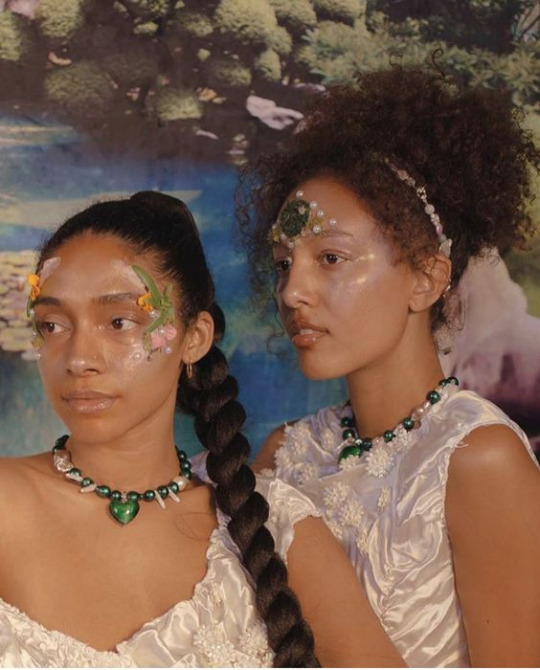
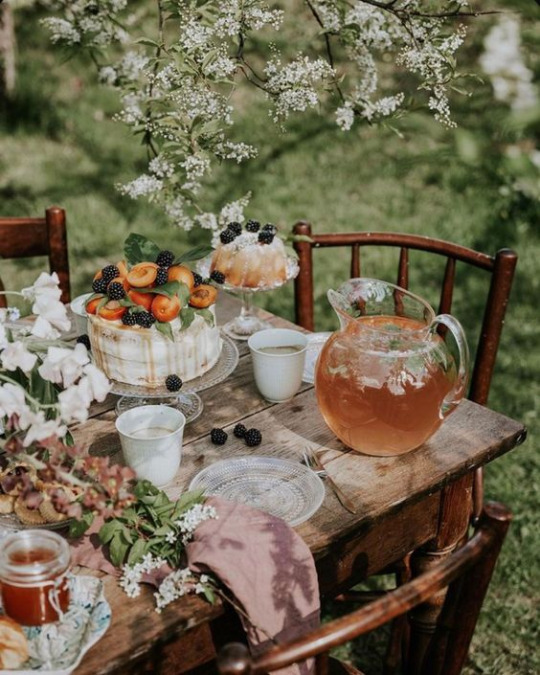
A few months later is the Summer Masque, which is held on the longest day and is a celebration of the lushness of the forest; this day is full of dancing and song to display the excitement of the wild. The outfits of this festival are quite extravagant, featuring a lot of animal and flower motifs.
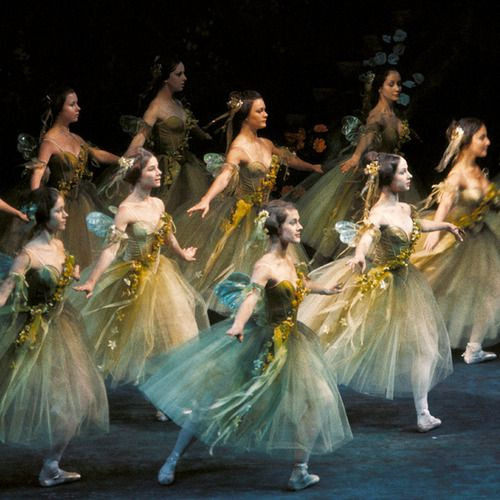
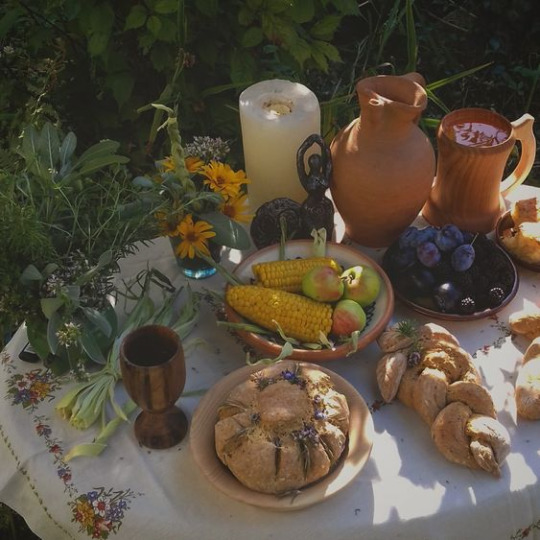
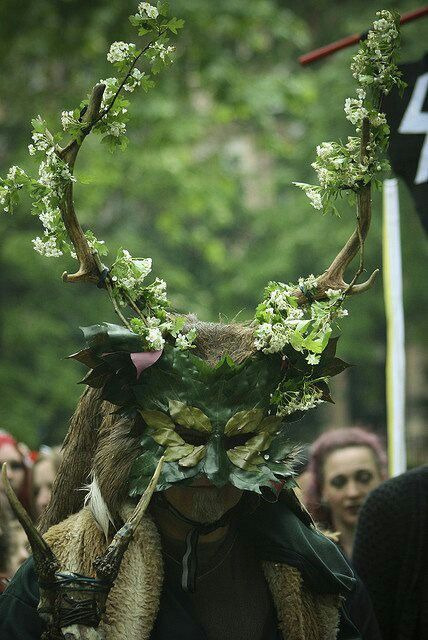
When the days shorten and the forest is completely covered in the colors of fall, the Autumn Masque arrives, bringing with it a bounty of harvest, changing leaves, and preparation for colder months ahead. The colors of this festival are warm and rich, and there is plenty of hot food and aromatic spices in every dish.


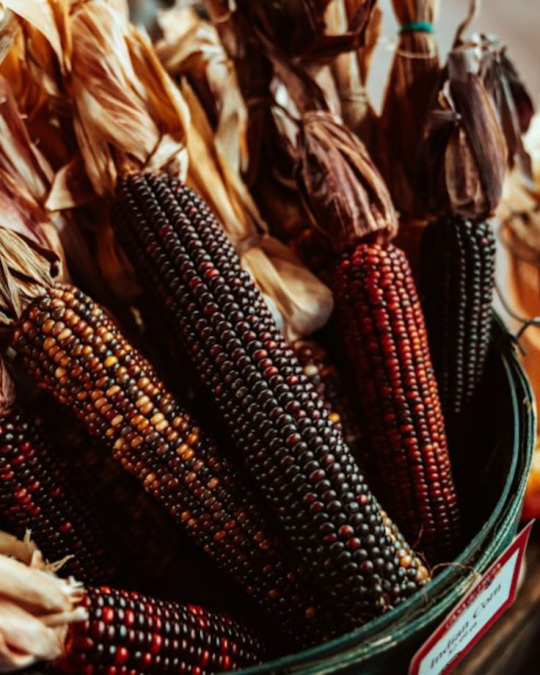
Finally comes the Winter Masque, and the end of the cycle of seasons. The Elves gather inside the Elvenking's Halls, where it is warm, making this a quieter and gentler holiday illuminated with candles, starlight, and snow; the forest is sleeping, so the festivities are quieter to avoid disturbing it. Often, there is a hunt, and the costumes are very fur-based to keep warm, and fresh spiced venison and wine is served.
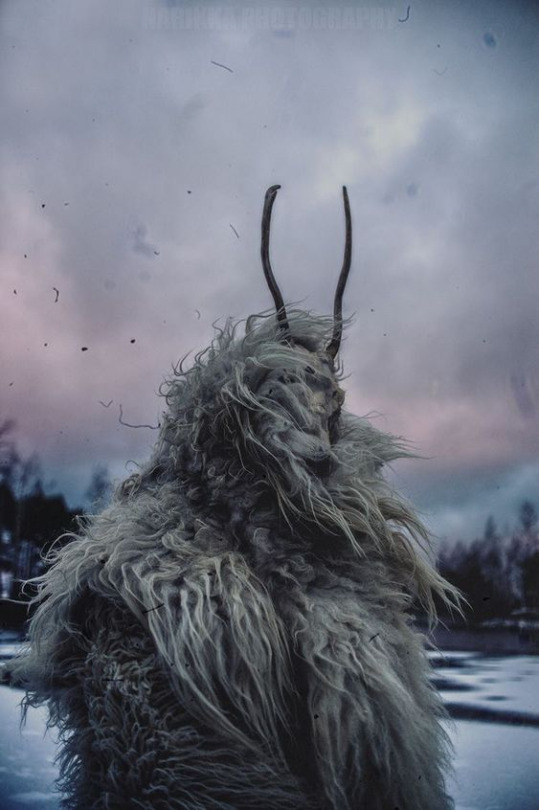
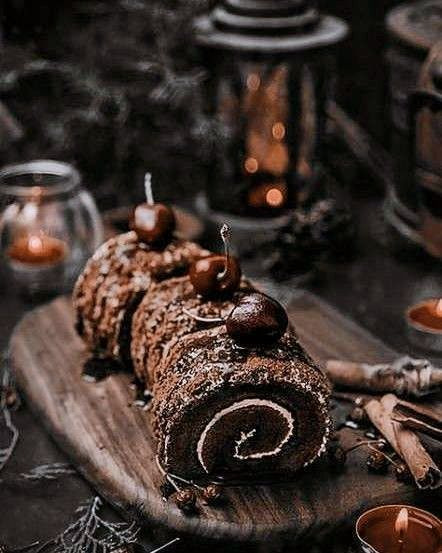
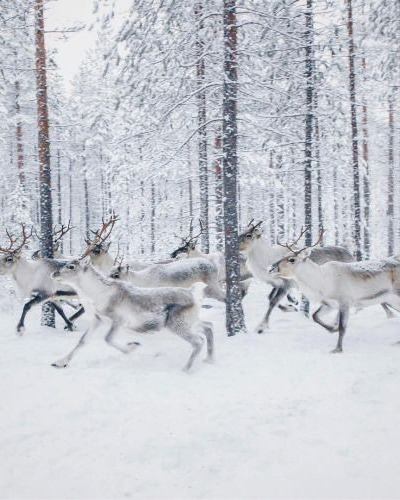
There is also the Feast of Starlight (or Mereth Nuin Giliath in Sindarin) which takes place in the early winter, when the trees are bare and the stars are clearest; this is the feast that is featured in The Hobbit films, and, as its name suggests, it is a commemoration of Arda's dearest creations.
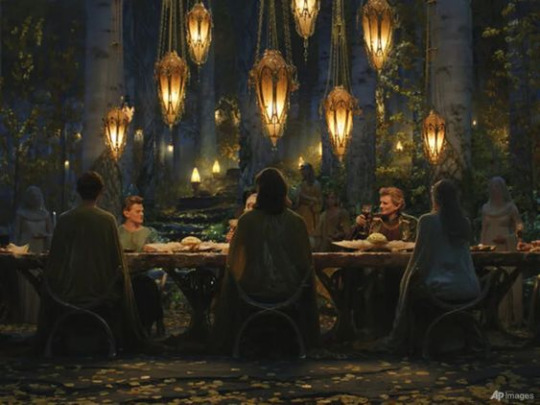
However, not all of the Silvan Elf holidays are joyful. Lû-o-fuin, or Time of Darkness, is a period of mourning for the Mirkwood Elves; it is a week-long fast in honor of all the lives lost during the War of the Last Alliance. Though the rest of Middle-Earth celebrates this time for the fall of Sauron, the Silvan Elves remember it for the grief it caused to their people - they lost King Oropher and an overwhelming number of their army, and this also marks the time in their history when the Necromancer first came to Greenwood and the trees began to wither. To honor this loss, the Elves do not eat or drink for a week, and wear only ash-colored robes. On the last day of mourning, they go to the Forest River, where they make small boats out of leaves and set them floating in the water, to signify the souls of those who died returning to Faerie (Valinor).
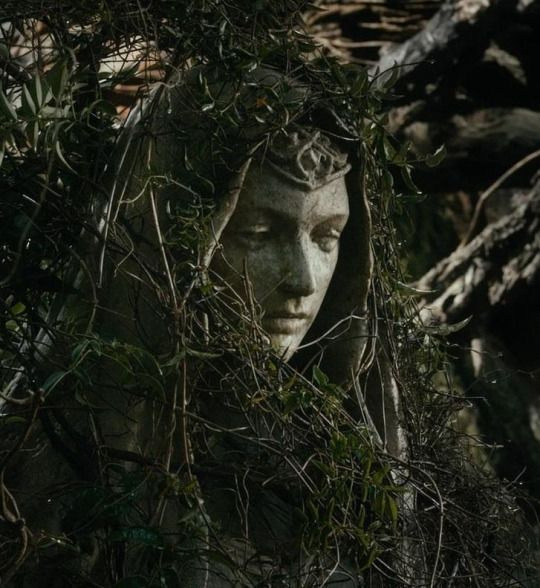
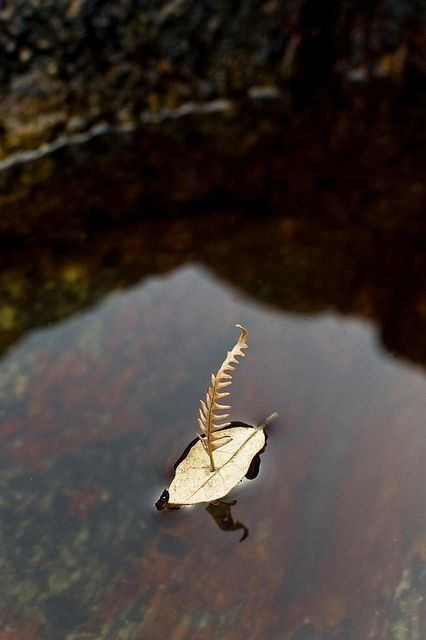
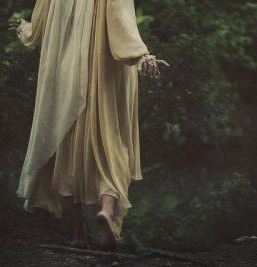
Those are some ideas for Mirkwood Elf holidays! I hope you like them (because I spent a lot of time thinking about these and even longer looking for the right images...), and thank you so much for giving me the opportunity to share this!

If you're interested in my imagining of the Silvan Elves in Mirkwood, check out my mirkwood headcanons tag! If there's a headcanon you want me to explore that I haven't already, my ask box is open!

#mirkwood#mirkwood elves#silvan elves#worldbuilding#lord of the rings#the hobbit#the silmarillion#my writing#headcanons#mirkwood headcanons
21 notes
·
View notes
Note
What holidays do you celebrate in Octan? :D

One of our biggest national holidays is Alliance Day, which celebrates the formation of our alliance with Cape Space. That relationship has sometimes been strained, like when Sirius' father held the throne, but it has persisted for nearly four hundred years now. There's usually lots of parties and food and fireworks involved.
King's Day, the day our kingdom was founded, is celebrated in much the same way. There's also a huge parade in Bricksburg, and the ruling monarch at the time- not always a king- will make a speech and pray for another year of prosperity.
We also have the Four Festivals, which celebrate the Four Gods. They are each held on the first day of each god's associated season and typically last for a week. For example, the Frost Festival which honors Arwil is on the first day of winter. It marks the start of the new year, and the season of rest. Gifts are often exchanged, and most people choose to spend this holiday with family and close friends. You can also find many candles and strings of lanterns decorating most homes as a guard against the longest nights of the year.
The Blossom Festival in spring is full of performances by musicians, storytellers, and acting troupes performing new plays. Graduating apprentices will show off their masterpieces in the hopes of attracting rich patrons to support them, or hobbyists will sell their works for a bit of extra cash. Farmers usually spend the week after getting their crops sown, weather permitting. It also kicks off the start of what we tend to call "faire season", in which there are any number of smaller celebrations and festivities where makers of any sort will sell their wares. It runs on through summer, and comes to an official end on the first day of the Harvest Festival.
The Makers' Festival in summer is the time for tradesmen and women to show off their skills. You'll find many beautiful and high-quality works on display during this time. It's also a good time for young aspiring craftspeople to find someone to mentor them.
The Harvest Festival is when we celebrate the bounty of the crops we have reaped, and another year of good health. As you might guess, there is a LOT of feasting during this week. It's also a good excuse to use up dried herbs and spices from the year before to make room for new stock. If any are still left over at the end of the week, they are burned. I think people used to believe doing so would help to ward off illnesses in the coming cold months. It's just a tradition these days.
15 notes
·
View notes
Text

1307 – Day 1
It’s the (late) spring harvest in the Praaven countryside, to make room for the wheat they Townsends need to plant for the summer. Luckily, with most of the children old enough to pitch in, they have hands enough to get the harvest – which is blessedly bountiful – over with quickly, after first making sure all plants are healthy and strong.


Anne, meanwhile, uses what time she has to spend with her second son, in the knowledge that Robert will leave their small farm in only a few months’ time. Robert, however, prefers to play with his older brother after their tasks on the fields are done.


While the boys stay on the farm, Anna has received word from George that he will be in Tovar with both his parents. She has never actually met Mary Crawley but heard tell about how haughty she is and how little she approves of her and George’s…friendship.
If it even is a friendship anymore. She has known him since she was six, so really, he should be more like a brother to her than anything else, but she likes the thought of moving to the town to be with him and spend her life as his wife. Part of that could be how often her parents tell her what a splendid match it would be, but she also just feels comfortable, being with George.
She decides to quiz him on his opinion when they meet and pulls him aside into the covered market right after greeting his parents.
“I must thank you for inviting me to this celebration, George.”
He smiles. “I must thank you for accepting.”
“But I must ask: Why? I’m sure there are dozens of girls you could ask.”
“Ah, but you see, there’s be a slight hitch in that plan.”
“And what would that be?”
“Well, I’ve decided to only attend with the most beautiful girl in the vicinity of Praaven on my arm.”
She is sure she goes scarlet at that compliment, but she tries desperately to keep her cool. She doesn’t want to seem eager.
“I’m sure the Countess or the Baroness or any other number of mothers around here would take issue with your implication that their daughters are less fair than some peasant girl.”
“Not just any peasant girl. And they will see that soon enough. I don’t plan for this to be the only event we attend together. If you are amenable.”
She raises her brows. “George Crawley, are you asking to court me?”
“If you want to put it like that, yes.”
She is ecstatic, to say the least.




The talk she has with Mary Crawley after that is far less pleasant. The woman asks a few very pointed questions about her upbringing, which she clearly finds lacking. But Anna is so happy that George has made his interest clear that she really couldn’t care less.
Matthew Crawley, meanwhile, is more interested in watching a lizard than in participating in his wife’s discussion with Anna.




Back on the farm, Edith, despite her parents’ hopes that she too will soon find a match and start her own family, is more interested in helping with the planting of the crop and the children than in hunting for spouses. Not that her parents can really complain about that, either. With all their young children and enterprises, they need all the help they can get.


Prev: 1305, Day 4 <--> Next: 1306, Day 2
7 notes
·
View notes
Text
Midsummer Magic 🌞✨
Hello darlings 🥰
As the sun reaches its peak and the days grow longer, we find ourselves in the enchanting embrace of midsummer. June is a month filled with vibrant energy, abundant blessings, and the perfect opportunity to immerse ourselves in the magic of this season. Here are some ways to celebrate and honor the essence of summer during the month of June:
🔥 Welcome the Solstice: On the summer solstice, the longest day of the year, create a sacred ritual to honor the sun's power and embrace the abundant energy of this season. Light a bonfire, dance in its flames, and offer gratitude for the warmth and illumination it brings.
🌸 Connect with Nature: Take advantage of the blooming beauty of the natural world during this time. Spend time outdoors, stroll through lush gardens, or embark on a nature hike to connect with the vibrant energy of the earth. Collect flowers, herbs, or seashells to infuse your practice with the essence of summer.
🍓 Harvest and Abundance: June is a bountiful month filled with fresh fruits and vegetables. Visit local farmers' markets or grow your own herbs and produce to incorporate into your meals and magical concoctions. Give thanks for the abundance that nature provides and celebrate the nourishment it brings to your life.
🌻 Sun Magic: The sun is a radiant source of power and vitality. Harness its energy by performing sun salutations, practicing sun gazing, or creating a sun-infused oil to use in your rituals. Bask in the golden rays, allowing the warmth to revitalize your spirit and ignite your passions.
💦 Water Blessings: In the heat of summer, water becomes a precious gift. Seek solace near bodies of water, whether it's a lake, ocean, or a simple backyard pool. Take cleansing baths, go for a swim, or collect water from a natural source to use in your spells and rituals, invoking the element of water's healing and purifying properties.
🌺 Summer Altar: Create a vibrant summer-themed altar in your sacred space. Adorn it with flowers, seashells, feathers, and symbols of the sun to honor the season's energy. Add citrine, carnelian, or sunstone crystals to amplify the warmth, joy, and abundance of this time.

Every moment of the summer holds its own unique magic. Embrace the warmth, joy, and abundance that this season brings. Allow yourself to be present in the beauty that surrounds you and open your heart to the transformative energy of midsummer ☀️
____
🌞 If you enjoy my posts, please consider donating to my energies 🌞
✨🔮 Request a Tarot Reading Here 🔮✨
____
With love, from a Sappy Witch 🔮💕
Blessed be. 🕊✨
#midsummer#summersolstice#witchyvibes#witchythings#summermagic#witch altar#summerblessings#natureconnection#sunmagic#elemental magic#witchcraft#pagan#seasonal#witchylife#witchycommunity#mindbodyspirit#witchyinspiration#magical#summervibes#baby witch tip#mine#sappywitch#sappywitchcoven#blessedbe
35 notes
·
View notes
Text

Leviticus 23:4-8 (NLT). “In addition to the Sabbath, these are the Lord’s appointed festivals, the official days for holy assembly that are to be celebrated at their proper times each year. “The Lord’s Passover begins at sundown on the fourteenth day of the first month. On the next day, the fifteenth day of the month, you must begin celebrating the Festival of Unleavened Bread. This festival to the Lord continues for seven days, and during that time the bread you eat must be made without yeast. On the first day of the festival, all the people must stop their ordinary work and observe an official day for holy assembly. For seven days you must present special gifts to the Lord. On the seventh day the people must again stop all their ordinary work to observe an official day for holy assembly.”
“Feasting As Worship” by In Touch Ministries:
“Gathering to celebrate God’s goodness honors Him and blesses us.”
“When the Israelites entered the Promised Land after years of wandering in the desert, God issued a strange command: Feast.
Feasting and enjoying the bounty of the land were meant to tie the Israelites to different rhythms throughout the year—such as harvesting the first and last of the year’s crops. Festivals were also a way of commemorating the mighty acts of God on the people’s behalf, like the night of the Passover when God spared all who’d painted their doors with the blood of a lamb. Ultimately, these celebrations were an act of worship that reoriented God’s people to right relationship with Him. God was their provider and sustainer, so they feasted with gratitude. He was their rescuer and redeemer, so they feasted in holy remembrance.
Today we can learn healthy spiritual habits from these observances prescribed by God for the ancient Israelites. When we pause to give thanks for our blessings, we worship God with our time and attention. When we gather to simply enjoy His good gifts, we remember that “every good thing given and every perfect gift is from above” (James 1:17)—not from our own striving.
When was the last time you paused to savor God’s goodness, remember His faithfulness, and worship Him? Consider taking time to taste and see the goodness of God today.”
[Photo by Ivana Cajina at Unsplash]
#leviticus 23:4-8#praising god#worshiping god#celebrating god's goodness#honoring god#god loves you#bible verses#bible truths#bible scriptures#bible quotes#bible study#studying the bible#the word of god#christian devotionals#daily devotions#bible#christian blog#god#belief in god#faith in god#jesus#belief in jesus#faith in jesus#christian prayer#christian life#christian living#christian faith#christian inspiration#christian encouragement#christian motivation
15 notes
·
View notes
Text
Harvest Blessings: Mabon 🍎🌾
On September 22, the harvest festival of Mabon is celebrated. As the leaves begin to change color and a cool breeze sweeps the air, we find ourselves on the cusp of Autumn, a season of transition and transformation.

Mabon occurs on the Autumn Equinox, marking the beginning to fall here in the North where the days will eventually shorten. Mabon presents as an opportunity to reflect and embrace the coming darkness as a necessary part of the annual cycle. Mabon, also known as the Second Harvest or Witch’s Thanksgiving, is a time to be thankful for the bountiful harvest and to prepare for the dark months ahead.
On this day, the night and day are equal. This balance of light and dark is symbolic of the harmony and equilibrium that is found in nature. We are reminded that life is a constant cycle of change, and just as the seasons shift, so do our own lives. Mabon encourages us to reflect on the balance within ourselves and in our daily routines.
Symbols: basket, cornucopia, pinecone, seeds Colors: orange, red, yellow, brown, copper, dark yellow, dark green Foods: corn, beans, squash, apples, pumpkins, root vegetables, eggplant, pomegranate, grapes, wine, cider Herbs & Plants: yarrow, rosemary, sage, mugwort, rosehips, sunflowers, thistle, marigold Stones: amber, citrine, cat’s eye, aventurine, sapphire, jasper Deities: Mabon, Green Man, Demeter, Persephone, Morgan, Pomona, Inanna Animals: owl, stag, blackbird, crow, salmon
One of the central themes of Mabon is gratitude for a bountiful harvest. Today, even if we aren't directly involved in farming, we can still embrace the spirit of Mabon by giving thanks for the abundance in our lives and giving due gratitude for the things we do have in our lives that have served us well.
Named after the ancient Welsh hero named ‘Mabon ap Modron’, meaning Son of Mother, Mabon is the second harvest festival (Lughnasadh being the first, and Samhain being the third). Mabon was said to be held hostage as a baby in the underworld, similar to the story of Persephone and Demeter. The Greek goddess Demeter is closely associated with the Autumn harvest, as it was her grief at losing her daughter, Persephone, that turned the earth from lush to barren cold.
A celebration of not only the bountiful harvest that nature provides, but also the bounty and rewards of all that we have sown and also reaped over the past year. This is not just a time of harvest, but also a time to prepare the way so that new seeds will be able to grow in the future. The Equinox is a natural time in which to sow peace and gratitude. Any and all positive energy sent out at this time will help to ameliorate any discordant energy, both in our personal lives, as well as the world at large.
It is through gratitude that we can attune ourselves to the natural ebb and flow of this seasonal shift. And one way to do this is to create some sort of gratitude list. Begin with the things that we take for granted: clean air to breathe, water to drink, a safe place to sleep. Then move on to those things that you are particularly grateful for. Pay special attention to those people and things in your life that matter to you the most.

Here are some ways to celebrate Mabon:
The easiest and most fun way to celebrate Mabon is to decorate your home, porch, entryway or altar for Autumn. You might set up your altar with symbols of the season, such as acorns, pinecones or cornucopias and candles with autumn colors, like red, orange and brown, can add a warm, cozy ambience to your space. Bring in fresh and dried flowers, if you’re lucky enough to be able to cut your own, even better. Find acorns and pinecones from outside. If you don’t have access to your own, visit a farmer’s market or take a short stroll to the woods.
Go on a nature walk and appreciate the beauty of the changing seasons. Autumn is a time of stunning natural beauty with vibrant hues of red, orange and yellow. Take a leisurely walk to observe any signs that the season is changing. Nature has a way of grounding us and encouraging introspection.
Celebrating Mabon often means indulging in delicious feasts made from the season’s bounty. Incorporate seasonal foods into your meals. Apples, pumpkin, squash, and corn are all traditional Mabon foods. Try crafting apple pie, roasted pumpkin or heat up soups. Spend time with loved ones and enjoy a feast of seasonal foods. Sharing dishes with loved ones can deepen our connection to the season and its blessings.
During your walk or time outside, reflect on the past year. What goals have you achieved and what lessons have you learned? What do you want to release as you move into the darker, introspective months of the year? Consider writing these thoughts down. Write down what no longer serves you on a piece of paper and burn it to symbolize releasing those things.
Cleanse your house and release the negative and stagnant energies.
Light a candle and reflect on your blessings. Consider creating a gratitude journal where you can jot down the things you are thankful for. Create a gratitude list and share it with others. Acknowledging blessings can help connect with the essence of Mabon.
Mabon is a time to celebrate the beauty of the coming autumn season and the abundant harvest it brings. It is a time to let go of the old and embrace the new. It is a time to be grateful for all that we have and to look forward to all that is to come. Whether you choose to celebrate simply or do something bigger, the key is to embrace the essence of the season and the lessons it offers. As you celebrate, may you find harmony and contentment in the changing rhythms of life.
16 notes
·
View notes
Text
Wheel of the Year 2024, Partial Redux

Since my last Wheel of the Year reading, there have been some big changes in my life.
Some more or less noticable to a reading, of course, but one major one was so obvious I even saw it in the way my Wheel of the Year was laid out: A big potential cross country move, to a place with little support, for an uncertain job future, in a field I've only been hired in once before. The cards showed it clear as day: In July, there would be a massive change, a whole chapter of my life drawing the curtain. And after that... well, there were two deaths and a tower. It wasn't great.
But since that reading, I've had huge news that moved my relocation to next year - and with it, that whole certainty for July slips away. So I thought it would only be best, seeing as my yearly course has so dramatically shifted, to do a re-read for July through December and see what my NEW end of the year might bring.
Where We Are Now - King of Cups, Reversed A failure to create a loving or supportive environment. This card means that, where I am, I'm not in a place of emotional vulnerability or safeness. I'm not letting anyone in, leaving my cup upturned - empty - and refusing to be receptive to others or let them give to me.
July - The Six of Inking Balls This card represents drowning in your work for better or worse. Being lost in your job. I can already feel this incoming, with my job getting more and more frantic as production ramps up. It's a warning not to get too caught up in it and remember to pop to the surface, every now and then, for air and human connection. And to remember to eat.
August - Queen of Swords, Reversed This card heralds a sort of targetless rampage, a hack and slash approach to life where you kill all before you and take no prisoners for your goal. You will hurt and cut anyone in your way - you are demanding, brutal, and harmful, because you feel like you must be. Be careful where your blade may fall.
September - Page of Pentacles, Reversed A haziness, having no clearly set goals for yourself after your rampage left you aimless and empty. You don't really know what you want to do, drifting, and you're moving from thing to thing without setting roots down. Try to center yourself and judge why you're doing this, and if it may be better to stop in one place for a while.
October - 7 of Cups Suddenly, new! New projects, ideas, and choices, all popping up at once - abundant choice and boundless imagination. This is a card of opportunity, possibility of change, and new horizons. Make sure you pick wisely from the bounty in front of you, and enjoy it while you can.
November - Two of Whips, Reversed This card is about seizing your personal power, despite maybe feeling like you have low station or very little power to make change. Take a moment to assess the structures around you and see how you can make change without hurting those around you.
December - Dancing Death This is a happy death card! It's dancing on the grave of the old in order to joyfully celebrate the new coming on the horizon. It's a reminder to be light and joyful in the face of imminent change, and the temporary nature of life. A good way to close out a year and welcome in a period of massive change for me and my impending move, indeed.
Where We End Up - Seven of Pentacles Things coming to completion, and hard work paying off. Enjoy and appreciate what all your hard work has made for you, and now you can look ahead to plant a new crop - you know it will be bountiful if you treat it right, like you did the last. A bountiful harvest of a life well lived!
This reading definitely lines up much more closely with how I feel the next six months will be without the massive, upending move changing everything and turning things on its head. Hopefully I'll be able to take advantage of the good this reading entails, learn from the bad, and be ready with a full six months coming to joyful fruition to see the next phase of my journey off well.
#tarot#wheel of the year#wheel of the year 2024#alleyman's tarot#divination#witchcraft#cartomancy#queen. txt#the queens grimoire
3 notes
·
View notes
Text

A bountiful harvest
During the last week we witnessed the love this fandom has for the Rain Master, the one and only Yushi Huang. We'd like to thank everyone who decided to join in this celebration of a beloved character.
If you were not able to participate, you still have a month to do so. So please tag your works properly with #yshweek2023 and @ this account, we don't want to miss anything you create.
See you hopefully next year!
Twitter | Instagram | Discord | AO3 collection
#yshweek2023#yushi huang#tgcf#heaven official's blessing#tian guan ci fu#tgcf event#tgcf rain master#rain master#mxtx event
7 notes
·
View notes
Text
Harvest Morning & New Horizons: A Prelude to Alpine Microgreen's Dreams
https://youtu.be/dvhm765gOhA
🌞🌱 Day 12 Harvest Day & A Peek into the Future! 🌱🌞
Happy Monday, everyone! 🎉 Let's start the week with a burst of motivation: "Every morning starts a new page in your story. Make it a great one today!" As we harvest today’s bounty, we're also gearing up for an exciting new chapter starting on the first of May at our upcoming Alpine Microgreens Farm! 📖💪
Today marks a pivotal moment in our microgreens journey—not only are we reaping the lush harvest of our current crops, but we're also on the brink of expanding our passion into a bigger space next month. This harvest presented a significant learning experience. I distributed my products to six different golf courses and three restaurants, where I received feedback that emphasized the need for better packaging and a cleaner presentation. Instead of using see-through clamshells and a plain white plastic bag without any labels, it became clear that a more professional and appealing packaging approach was necessary. The next round of samples will be sourced from our newly established Alpine Microgreens Farm! 🌿🚀🌿🚀
📚 Intriguing Microgreens Facts for Harvest Day:
Rapid Growth Cycles: Microgreens are the sprinters of agriculture, ready for harvest within just 1 to 3 weeks after planting, making them an ideal crop for continuous production cycles. 🕒🌱
Nutrient Powerhouses: They pack a remarkable nutritional punch, often containing higher levels of vitamins and minerals per gram than their mature plant counterparts. 🍽️💪
Sustainability Champions: Microgreens require minimal water and space, making them a sustainable choice for urban settings and reducing our ecological footprint. 🌍♻️
As we celebrate today's harvest, let’s look forward to the opportunities that Alpine Microgreens Farm will bring starting this May. This new facility, with its ample space and dedicated areas for growth, will enable us to cultivate more varieties and connect more closely with our community. 🏡🌱
Here’s to a fruitful harvest today and to the future growth at Alpine Microgreens Farm! 🌟🍃
Stay inspired, and let’s make this week as abundant as our microgreens harvest!
#Day12 #MicrogreensJourney #HarvestDay #MondayMotivation #AlpineMicrogreensFarm #ComingSoon #SustainableFarming #UrbanAgriculture #LocalGrowth #FreshHarvest #PlantPower #HealthyEating #GrowYourOwn #EcoFriendly #NutrientDense #RapidGrowth #FutureExpansion #GardenFresh #NewBeginnings #GreenThumb #UrbanGardeners #EatLocal 🌱🎉🌿🌞💚y 🌞🌱💧✨💚✨🌱💚
Watch as nature works its magic, one leaf at a time, and discover the beauty and wonder of microgreens! 💫
Don't forget to like, share, and subscribe for more green goodness! 🌱💚
Join the conversation and share your own microgreens adventures in the comments below! 💬
Let's celebrate the marvels of nature together! #AprilFun 🌱💫💪🌱 #MicrogreensTraining #GreenGains #HealthyHabits #GrowYourOwn #UrbanGardening #TinyButMighty #PlantPower #HomegrownGoodness #TikTokGardening #GreenThumb #AlpineMicrogreens #London #Ontario #Canada #EatYourGreens #Vegetables #MicrogreenFarmer #AlpineFarmer #Microgreens #CrispAlpineMicrogreens 🌱💚🌱🎥 🌱💫 #MicrogreenMagic #GrowthJourney #ShareYourGreens 🌱🌟
2 notes
·
View notes
Text
Celtic seasonal festivals - Part 3: Lughnasadh
Part 1 ; Part 2 ; Part 4
Hello everyone! It's August 1st, which means it's once again time for another issue of our series on Celtic seasonal festivals. Today, we will take a look at the origins, rituals, and surviving customs of Lughnasadh - one of the less known, but no less significant festivals.
General/Etymology
Lughnasadh, pronounced loo-NAH-sah (alternatively called Lughnasa/Lúnasa), is one of the Celtic seasonal/"fire" festivals that marked the beginning of the harvest season, traditionally being held on August 1st. (Although due to the lunar calendar of the Celts, the date might have been movable.) It took place when the first fruits of the year were ready for harvest, celebrating and thanking the earth for the bounty it had given to mankind.
Back in ancient times, the last days of July were trying time for farmers, since the crops from the previous year were already done and the new ones not yet ripe. Thus, it would make sense for the advent of the harvesting period to be considered an appropriate time for celebrations of joy and thanksgiving. This suggests a great focus on arable farming in Celtic culture, which is supported by historical evidence: In fact, the Celts were the first people to significantly change Europe's landscape from the Atlantic coast all the way to the Black Sea, turning primeval forests into a cultivated landscape of fields, farmsteads, and settlements. This was in no small part due to their ability to process iron, which was used for a multitude of agricultural tools such as axes, scythes, and sickles, allowing them to work the land with ease.
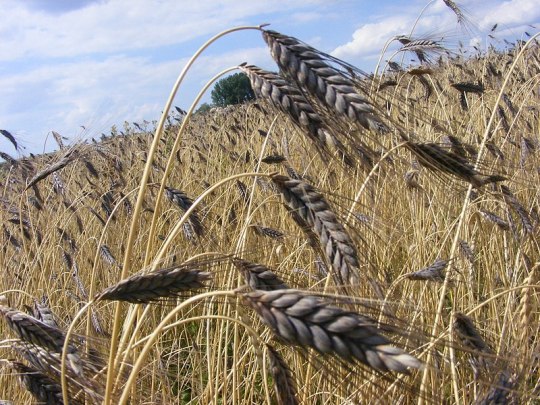
The main crops cultivated by the Ancient Celts were emmer (depicted above), spelt, einkorn wheat, millet, and barley; aside from food, the latter was also used for the production of beer (Source)
However, the most ingenious, revolutionary invention of the Celtic farmers was the iron plowshare: Celtic plows were the first ones to have a mobile coulter, with a sharp knife making a vertical cut while the share simultaneously did a horizontal cut, turning over the soil. This meant that the Celts didn't have to plow their fields twice, like other ancient peoples who still used wooden plows. Thanks to this and various other inventions - like sealable underground pits to keep the corn fresh and a kind of manure made from dung and chalk/loam - the Celts were able to achieve more successes in agriculture than any other people of the Iron Age. Not even the Roman plows of this period, which could only carve furrows into the soil, were comparable to those of the Celts.
It has been suggested that the Gaulish Celts referred to Lughnasadh as Aedrinia, derived from the name of the month Edrinios (possibly meaning "end of the heat", with heat being synonymous to aéd/fire) found in the Coligny Calendar. An alternate, older Irish term for the festival was Brón Trogain, which can be translated as "Earth's sorrow" (brón meaning sorrow/lamentation/burden, and trogain earth/autumn). Since the word trogan is also associated with the pain during childbirth in an Irish imprecation, the name can be seen as a metaphor for the grain "dying" to "give life to the people". On the other hand, trogain might also be translated as "(female) raven", which is known to be the companion animal of the god Lugh. In Irish mythology, Lugh is the god of justice, kingship, the art of war, and master craftsmanship, as well as the namesake of Lughnasadh. The Old Irish name for the festival, Lugnasad, is a combination of Lug - a variant spelling of Lugh - and the word násad, meaning "festival" or "assembly". Thus, Lughnasadh can be translated as "feast of Lugh"/"Lugh's feast". However, as we will soon see, a large part of the festivities were actually not in honor of Lugh, but his mother, Tailtiu.
Ancient Customs and Rites
Supposedly, Lughnasadh was introduced by Lugh as a funeral celebration for his mother Tailtiu. According to Irish lore, Tailtiu was the wife of Eochaid mac Eirc, the last High King of the Fir Bolg to rule over Ireland. However, upon the invasion of the Tuatha Dé Danann, the Fir Bolg were defeated and expelled from their homeland, with King Eochaid mac Eirc being among the casualties. However, Tailtiu survived the death of her husband and the Tuatha Dé Dananns' ascension to power, living on to become the foster mother of Lugh, the illegitimate son of the hero Cian and Ethniu, daughter of the demonic Fomorian leader Balor. Being a kind and hardworking soul, Tailtiu worked tirelessly to improve the living conditions of the people, cutting down forests and clearing the plains of Ireland so they could be used for agriculture. Eventually, however, her endeavors took their toll, and on August 1st, she passed away from exhaustion at Teltown. To commemorate her kindness and everything she had done for the Irish people, Lugh decided to declare the first of August as the time of the yearly mourning festivities for Tailtiu, his foster mother whom he loved so dearly.
From this, we can make various conclusions regarding the symbolic meaning of these myths: Scholars have proposed that Tailtiu may have originally been an Irish earth goddess, being the embodiment of dying vegetation/weed that serves to feed mankind. Furthermore, as Irish folklorist Máire MacNeill observed in her studies, the struggle for a goddess is also a theme present in various rituals of Lughnasadh: Usually, there is a conflict between two gods - one of them being identified as Lugh, while the other is believed to be a figure named Crom Cruach/Crom Dubh - who sometimes fight over a woman called Eithne, who has been theorized to be an ancient earth goddess representing the grain. The roles of the gods may also hint at their original function: In the folkloric context, Crom Cruach is the one to guard the grain as his treasure, not willing to give it up to Lugh who aims to seize it for mankind. This might be a remnant of Crom Cruach's original status as a chthonic deity, since gods and goddesses of the underworld were also thought to be responsible for fertility and growth in ancient times. There are also various surviving legends that associate Crom with a bull, intend on using the animal to sow discord and wreak havoc (sometimes, he turns into a bull himself to battle his adversary). However, they always end in Crom's defeat, with the bull often being sacrificed, consumed, and finally resurrected, which may be related to ancient practices of bull sacrifice. (There are various standing stones called "bull stones" in Ireland which are identified with Crom Cruach, and since human and cattle bones were found in stone circles such as the one at Grange, it is suspected that these places were ancient sacrificial sites.) Lastly, Lugh is also credited Lugh with triumphing over the personification of blight, which can be traced back to the myth of him killing his demonic grandfather Balor. Said to possess a single giant, havoc-wreaking eye, Balor is believed to represent the scorching summer sun as well as drought and blight, being defeated in battle by Lugh who blinds him with a slingshot.

Tailtiu by Wendy Andrew (left) and her foster son Lugh by Ire (right); Tailtiu is depicted with typical symbols of harvest (cornucopia, cow horns) as well as the image of a snake on her dress, an animal associated with healing in Celtic mythology; Lugh shares various characteristics with both the Greek Mercury and the Norse Odin, which can be seen in the attributes he is depicted with (winged sandals/winged helmet for Mercury; spear and raven for Odin)
Although we will most likely never know for sure what the ancient festival looked like, we can reconstruct its rituals from surviving customs and accounts from Irish literature. In a 15th-century version of Tochmarc Emire, one of the earliest mentions of the festival, Lughnasadh is said to commemorate the god Lugh's wedding feast, while in other texts, the origin is either attributed to the mourning of Lugh's wife Nás and her sister Buí, or the funeral games Lugh held in honor of Tailtiu. These games were known as Óenach Tailten (or Áenach Tailten) and were organized each year at Teltown in the Kingdom of Meath. It's estimated they lasted for about two weeks, and like all other customs associated with Celtic seasonal festivals, the ceremonies most likely began on the eve of August 1st. Fitting for an obsequy, it started off with a ceremony to honor the people who had passed during the year, which could take from one to three days. The guests would chant funeral songs known as Guba, followed up by the druids' Cepógs, improvised songs in memory of the dead. As a final act, the deceased would be burned on a gigantic funeral pyre. Afterwards, a universal truce would be declared by the Ollamh Érenn, the chief of bards and poets in Ireland who held a status comparable to that of a High King. Medieval sources confirm that all kings attending the óenach would agree to a ceasefire for the duration of the festival, and any violation of it was considered highly disgraceful. In addition, the occasion was also used as an opportunity to proclaim laws, settle legal disputes, and drawing up new contracts, which was achieved with the help of bards and druids acting as mediators between the rulers and the common people. Once the negotiations were over, yet another massive fire was ignited, signaling that the joyous celebrations following the funeral rites were about to begin: the Tailteann Games.
The nature of these games was very similar to that of the Ancient Olympic Games, featuring a variety of contests in disciplines such as running, hurling, high and long jumping, archery, spear throwing, as well as martial arts competitions in swordfighting, wrestling, and boxing. Swimming contests were held in artificial lakes specifically constructed for this purpose at Teltown, and horse and chariot races were extremely popular among the people (a structure strongly resembling Greek and Roman horse racetracks has also been found near the Heuneburg, a Celtic dig site in Germany dating back to the 6th century BC; this would make it the oldest preserved hippodrome in the world, as well as suggest a high significance of horse racing in Celtic culture). However, the games were not limited to shows of physical prowess: There were contests where participants had to prove their skill in singing, dancing, storytelling and Fidchell (a type of strategic board game), along with competitions to determine the greatest master goldsmiths, jewelers, weavers, and armorers. Aside from enjoying these various entertainments, many guests would also bring goods to exchange and trade them with other people. However, the character of these festivities was not really commercial - rather, the Óenach Tailten were a purely social event, meant to show off the manifold talents of their attendants as well as celebrate community and strengthen social bonds.
Due to this, the gathering was also believed to be an excellent time for matchmaking. We know that in Ireland, Scotland, and the Orkney Isles, trial marriages were a very typical Lughnasadh custom, which would be conducted by a young couple joining hands through a hole in a wooden door (this ritual known as "handfastening" has also become associated with Beltane in modern paganism, although there is no historic basis for this). These trial marriages lasted a year and a day, during which the youths were able to decide whether they wanted to spend their lives together. If the pair did happen to like each other, the marriage would be made formal after the period of time had expired - if not, the engagement would simply be annulled without consequences, and any children that resulted from the union would still be counted among the father's legal heirs.
Meanwhile, in Kildare, people celebrated the Óenach Carmain instead, which was held in honor of the goddess Carman (or Carmun). Scholars believe she may have once been a goddess similar to Tailtiu, although Irish mythology depicts her not as a native of Ireland, but as an invader who came from Athens during the times of the Tuatha Dé Danann. (It's interesting to note that her land of origin is specifically stated as Greece, especially since the Panathenaic Games in Athens share some similarities with the Celtic óenach; this gives room for the consideration that she might have been an import goddess who was villainized later on.) The Óenach Carmain seems to have been a little more focused on agriculture and commerce, featuring markets for food, livestock, and foreign trade.
Aside from the glorious óenach in the cities, it can be surmised there were also some more rural Lughnasadh traditions, varying depending on the locality. We have accounts that cattle was blessed on the eve of Lughnasadh, and that charms would be made for both the livestock and milking equipment which were supposed to last a year. (This is very similar to certain Beltane customs, which were also meant to bring good luck and ensure a plentiful supply of milk throughout the year.) Cows would be milked in the morning, with the milk being collected to be later drunk during a feast. In addition, people would go out to gather bilberries which were also an important part of the festive buffet, and if there were lots of bilberries, it was said that the harvest would be plentiful as well. Special dishes that represented the harvest would be prepared, such as porridge and bread, often including fresh seasonal fruits. In the Scottish Highlands, an oatcake called lunastain would be baked, which is believed to have its origins as a sacrificial offering. It was also tradition to bake a bread from the newly harvested grain, made with a baker's peel of rowan or another sacred type of wood. This bread would be served to the head of the household, who would eat it and then walk sunwise around the cooking fire while chanting a blessing prayer. Finally, everyone would have a communal meal of the freshly harvested foods.

Enjoying a loaf made from the first grain was one of the most common Lughnasadh traditions (Source)
However, there were also rituals that had a more religious, sacred aspect: On Lughnasadh, a variety of ritual dance plays would be re-enacted, usually centering around the god Lugh and his heroic deeds. For example, one play told about Lugh's and Crom Cruach's battle for Eithne, while another revolved around Lugh imprisoning the monster of blight and famine, saving the harvest and seizing it for mankind. In addition, a large, carved stone head was often placed on top of a hill, most likely representing Crom Cruach, after which an actor playing Lugh would symbolically triumph over it.
The sacrifice of a sacred bull was also an integral part of the festivities, followed by people feasting on its flesh as well as some sort of ceremony involving its hide. (According to Irish lore, sleeping in the hide of a sacrificed bull was a common rite of divination among druids, particularly when it came to determining the successor to the title of High King.) Eventually, the ritual was concluded by the bull's symbolic replacement with a younger one, which was most likely meant to represent its resurrection. Since Lughnasadh was the time when the first corn would be cut, there was also an offering of the First Fruits of the year, with the first sheaf of weed being brought to an elevated place where it was buried as a sacrifice to a deity (this indicates the deity was chthonic in nature, since the dwelling of chthonic gods was believed to be beneath the earth). Sometimes, people would also adorn themselves with flowers while ascending the hill, which would then be buried at the summit to signify that summer was ending.
In fact, many Lughnasadh customs took place on mountains or hills. Beginning after sunset, people would make pilgrimages to mounts such as Knocknadobar, Drung Hill, Mount Brandon, Slievecallan, Slieve Donard, Church Mountain, and Croagh Patrick (which was known as Cruachán Aigle back in the day). On many of these mountains, megalithic monuments and stone tombs, so-called cairns, were found, confirming that they have been of high cultural significance for a very long time (in close proximity to Croagh Patrick, archaeologists even discovered remains of a Bronze Age hillfort, dating back to the 8th century BC). People probably came to these remote places to remember their ancestors, and it can be assumed that spiritual ceremonies were performed at the old graves. Also, many hills had a holy well located on top of them, and just like on Imbolc and Beltane, visiting holy wells (colloquially called "clootie wells") was a very common custom on Lughnasadh. Visitors would pray for health while walking sunwise around the well, typically leaving an offering in the form of coins and "clooties" - small pieces of cloth or fabric that would be dipped in the well water and then hung on a nearby tree. Furthermore, the wells were often decorated with flowers to add to the solemn atmosphere.
However, the hilltop gatherings also had a more secular side: In many ways, they were like a smaller version of the óenach, with sporting competitions in weight-throwing, hurling, and horse racing. The tradition of a mock faction fight has also been recorded, involving two groups of young men who would have a contest in bataireacht, a type of Irish martial art that included fighting with sticks called shillelagh. From Scotland, we know of a competition between groups of youths who each built a tower of sods with a flag on top, trying to sabotage the towers of their rivals for a number of days before finally meeting "in battle" at Lughnasadh. Aside from this, various other games were also played at the gatherings, and there was a general merry atmosphere. People would feast, drink, tell stories and dance to folk music, with the typical matchmaking customs also being present. Some of these open-air gatherings also featured bonfires, although they were pretty rare and held less significance than those of Beltane. The celebrations and festivities lasted three days in total, usually being overseen by a chosen representative of the god Lugh. Once the festival came to a close, there would be a ceremony to indicate that the interregnum was over, and the chief god back in his rightful place.
Finally, same as with the other seasonal festivals, there were certain superstitions associated with Lughnasadh, particularly in regard to the weather. The beginning of August was seen as a good time for weather divination, and predictions seem to have been based on atmospheric conditions at Lughnasadh. For example, a thunderstorm with rain and lighting was believed to indicate good growing weather, due to the warm air needed for the storm to form. (In Irish lore, thunder and lightning are associated with the god Lugh, and the sparks produced are believed to stem from his grandfather Balor whom he slayed.) However, since the weather around Lughnasadh was generally very unstable and torrential rain was no rarity, it was all the more important to harvest the corn quickly, as it could otherwise be spoiled by floods. In fact, these heavy torrents were so typical of this period of the year that they became later known as "Lammas floods" in several proverbs (Lammas being the Christian equivalent of Lughnasadh). Furthermore, there are sayings such as "August needs the dew as much as men need bread" and "After Lammas, corn ripens as much by night as by day", indicating that the abundant moisture was essential to the ripening process of crops.
Garland Sunday and the legend of St. Patrick and Crom Dubh
After the 9th century, the Óenach Tailten were only held irregularly, and in the wake of the Norman invasion of Ireland, the custom died out completely. Still, many traditions associated with Lughnasadh survived the decline of the ceremonial games. With the advent of Christianity in Ireland, many of them were recast as Christian rites: For example, the custom of climbing mounts and hills on Lughnasadh stayed alive in the shape of Christian pilgrimage routes, the most prominent being the ascension of Croagh Patrick. (According to folklore, Croagh Patrick is the place where Ireland's patron saint, Saint Patrick, fasted for 40 days, chasing away a flock of demonic birds that attacked him on the mountain with his bell; in other versions, it's said he banished all snakes from the island, which have been theorized to stand symbolically for pagan gods.)
Traditionally, the festival of Lughnasadh took place on August 1st, but over the course of the centuries, all festivities and gatherings have been moved to the Sunday nearest to it (either the last Sunday of July or the first Sunday of August). This might have been influenced by the adoption of the Gregorian calendar, as well as the Christian custom that Sunday was a day off work anyway - thus, it was naturally more suited for large assemblies. Yet another factor may have been that the harvest season was a very busy time for farmers, and since the weather conditions tended to be unpredictable around this time, it was probably wise to reap the harvest as soon as possible and don't let a regular work day go to waste.
Over time, the original name Lughnasadh was abandoned, and the festival was dubbed various regionally differing names, such as "Lammas Sunday", "Bilberry Sunday", "Mountain Sunday", or "Garland Sunday", the latter being derived from the widespread custom of strewing garlands of flowers onto festive mounts (this is very reminiscent of some Beltane customs, which also involve strewing about flowers for good luck). No matter the moniker it was known by, the festival continued to be an important date that marked the beginning of the harvest, and every farmer was expected to provide the people with fresh potatoes, bacon, and cabbage on this day - otherwise, they would be called a "wind farmer" for their lack of skill in husbandry. Likewise, it was considered improper to dig out any potatoes prior to this date, which was either seen as proof of economic mismanagement or neediness.
In some regions, the day was also known as "Crom Dubh Sunday", referring to a famous legend of St. Patrick overcoming a figure named Crom Dubh. Depending on the version, Crom Dubh is either a pagan chieftain, a god, a pirate, or a robber - in the end, however, he is always either defeated or converted by St. Patrick. It is highly likely that Crom Dubh is identical with Crom Cruach, the suspected chthonic god whom scholars assume to be similar to the Roman Hades and Greek Pluto. In the tale, Crom Dubh is described as "the lord of light and darkness" and master over the seasons, and is said to keep a fire burning near his property, throwing unlucky trespassers into it as punishment. (This is assumed to be a remnant of ancient sacrificial rites; there is the folk belief that the term "dubh"/"dua" means sacrifice, although Crom Dubh more likely translates to "black crooked one".) Sometimes, he is also said to possess a granary or a bull. Considering all of these parallels with the myth of Lugh's victory over Crom Cruach, it can be seen as a Christian adaptation of it, with St. Patrick replacing the Irish patron god.
One version of the story goes like this: "Once, there lived a chieftain in northern Ireland, in what is today known as the County Mayo. He was a resident of a place that is now called Dún Pádraig (Downpatrick Head), where he lived in a house by the sea, at a site known as Dún Briste. His name was Crom Dubh, and he is said to have been an extremely vicious, wicked, and obstinate man, only surpassed in evilness by his two sons, Téideach and Clonnach. In addition, Crom Dubh possessed two hounds, named Coinn Iothair and Saidhthe Suaraighe, which were as malicious as any dogs ever get. He used to tie them to the posts of his door, and if any poor soul should trespass on his property, he would unleash them and send them after them. For all the intruders who escaped the lacerating maws of his hounds, there was an even more brutal punishment waiting for them: At the edge of the cliff close to his home, he kept a large fire burning, which he used to throw any fugitives into the flames.
Crom Dubh, his sons and his hounds were infamous for their wickedness, and the common folk were so terrified of them they would tremble in fear at the mention of their names - and if they so much as heard the bark of a dog, people would seek shelter in their underground dwellings, fearing the arrival of Crom Dubh and his entourage. Despite his growing age, Crom Dubh remained quick as the wind and nimble as a hare, and regularly, he would go through the countryside to collect taxes from his subjects. Every time he did so, he would send his sons with his hounds ahead, who would announce to the residents that Crom Dubh was coming to collect his taxes. Each person had to pay as much as they could afford, which would all be loaded onto a sledge-like yoke Crom Dubh was dragging behind him. If anyone refused to pay their dues, they would be taken before Crom Dubh the next day - while sitting by his fire, Crom Dubh would pass judgement upon them, ending with the usual sentence of throwing the culprit into the flames.
Many plans were forged to overthrow Crom Dubh, but he was assisted by a leannán sidhe, a "fairy sweetheart", providing him with arcane knowledge and power, so he was able to overcome each and every attempt on his life. People would've given all they had for him to finally be put to an end, but alas, he and his minions held the power, so all they could do was to endure the ever-worsening persecution. Left without any hope or relief, the people had no other choice but to submit to Crom Dubh, because despite their detestation for him, it was still him who brought them the light of day, the darkness of the night, and the change of seasons.

This majestic, about 50 meters high sea stack known as Dún Briste is allegedly the place where Crom Dubh once lived, located just off the coast of Downpatrick Head near Ballycastle, County Mayo (Source)
One day, St. Patrick was going through Ireland, fulfilling his missionary obligation and baptizing many people. Eventually, he came to a place called Fó Choill (Foghill), an area that was densely forested back in the day. There, he could only convince a few inhabitants to listen to his preaching, but those that did took the new faith and let themselves be christened at a nearby well. After Patrick drew the sign of Christ on their foreheads, some pagans began telling him about Crom Dubh and his evil ways, asking him if it was in his and the Holy Father's power to put him in his place or make him convert to Christianity.
St. Patrick complied with their pleas, making his way to the dwelling of Crom Dubh. When he arrived there, Crom Dubh and his son Téideach didn't even notice him at first, as the two of them were engaged in a wrestling match. Saidhthe Suaraighe laid strechted out next to them, and only when the dog gave a howling bark did Crom Dubh and his son turn, seeing St. Patrick and his company of guardians approaching behind them. Subsequently, they charged at them, clapping with their hands to order the dog to attack Patrick's party. Meanwhile, Téideach whistled for Coinn Iotair, which had been taken on a hunting trip by Clonnach, but came running as swift as the wind when called for. Thus, Crom Dubh and his son set their dogs on the foreigner, unaware of who he was or where he came from. The two hounds came at Patrick with foaming mouths, raised fur, and a menacing blue light in their eyes, but the saint remained calm and drew a circle around him with his crozier. Just as the dogs were about to seize him, Patrick spoke a few holy words of protection, and the second he had uttered them, the two animals ceased all hostility, much to the dismay of Crom Dubh. They laid down their ears and wagged their tails, jumping at Patrick and licking his toes, with the saint returning the favor by stroking them. Afterwards, he continued to go after Crom Dubh, the two dogs now following behind him. Crom Dubh fled in the direction of his fire, hoping to lure Patrick there and throw him into it like all his other victims. However, St. Patrick had been forewarned about the fire's power and stayed away from him, instead taking a stone and drawing the sign of the cross on it. He cast the stone into the middle of the flames, banishing the fire to the deepest depths of the ground, so low that a hole called Poll Na Seantainne ("hole of the old fire") can be seen there to this day.
Crom Dubh, seeing that his fire had gone out and his hounds had disobeyed him - which was completely unheard of before - fled to his house together with his son, St. Patrick following after them. Patrick talked to Crom Dubh through the closed door, doing his best to convince him to take on a more righteous path, but Crom Dubh refused to listen to his words, and neither did he let himself be baptized. Still, he was unable to put up any resistance against Patrick, as the word of God was more powerful than the witchcraft of Crom Dubh's fairy sweetheart.
Furious, Crom Dubh and his son began snapping at the saint, who promptly rammed his crozier into the ground and split the cliff in half the house was built on, separating it from the mainland - henceforth, this cliff was known as Dún Briste, meaning "broken fort". Being cut off from the mainland by a swath of sea, Crom Dubh and Téideach were left to die miserably, with midges and crows feasting on their bodies. When Clonnach, Crom Dubh's second son, saw what had happened upon his return, he set fire to the surrounding cliffs out of fear of Patrick. However, the cliffs blazed so violently that Clonnach was soon trapped in the flames, burning to a heap of ashes himself.
Afterwards, St. Patrick returned to Fó Choill, where he was greeted by droves of people showering him with thanks for putting Crom Dubh to justice. The saint took all of them to a well nearby, not leaving a single person unbaptized. In their celebratory spirits, the people thoroughly cleansed the walls of the well and the area around it, putting up forked sticks and tree branches with white and blue ribbons tied to them. They fell onto their knees, speaking prayers of gratitude to God and hailing St. Patrick for putting an end to Crom Dubh's dominion, after which everyone drank three sips from the well's water.
From then on, people would always make a pilgrimage to Cill Chuimin (Kilcummin) each year, the place where the well was located, coming together from far and wide to celebrate the anniversary of Crom Dubh's defeat. The date was always the last Sunday of the seven month, the month the Irish speakers called Lúnasa, while the Sunday was known as Crom Dubh's Sunday - to the English speakers, however, this Sunday became known as Garland Sunday."
Legend has it that Dún Briste, an island consisting of a steep chunk of cliff that has broken off from the coast near Downpatrick Head, is the piece of land where Crom Dubh's once lived and which St. Patrick separated from the mainland. Lying just a few miles north of Ballycastle in the County Mayo, the site is a tourist attraction to this day, and many people come to gaze from the edge of Poll Na Seantainne - the blowhole allegedly created by St. Patrick when he threw his stone into Crom Dubh's fire - into the turbulent sea below.
Whether one wants to believe it or not, the legend of Crom Dubh stands as a testament that despite the typical message of the superiority of Christianity, the old Irish myths did not die out, but rather were reinterpreted with the figures being replaced by different actors. Instead of trying to suppress and eradicate native Irish culture, the new Christian traditions merged with the old pagan ones, creating a unique sub-branch of Christianity.
Modern traditions and Christian Lammas
Up until the 20th century, old Lughnasadh traditions were still widely practiced in Ireland. In 1924, there was even an attempt to revive the Tailteann Games as a modern sporting competition held shortly after the Summer Olympics. The Games were primarily open to people of Irish birth or ancestry from all over the world, but some prominent athletes who had participated in the Olympics were also invited as guests. The event included both traditional sports as well as modern ones, such as races with motorcycles, speedboats, cars, and airplanes (the only disciplines that were excluded were soccer, rugby, and hockey, as they were deemed too "un-Irish" for the liking of the hosts). Furthermore, there was a vast cultural program, consisting of artistic competitions in literature, poetry, music, and dancing, in addition to various commercial displays and exhibitions of arts and crafts. The Tailteann Games were held in the years 1924, 1928, and 1932, and even managed to garner a significant amount of public attention. However, when the political party Fianna Fáil won the elections of 1932, the Games lost their financial support, as they were closely associated with the previous ruling party, Cumann na nGaedheal, and their post-Civil War politics. A committee was established to examine the possibility of staging any more Tailteann Games in the future, and despite an event being technically deemed possible in 1939, Irish politician Éamon de Valera used the split among Irish athletics federations as a pretense to delay further consideration. With the onset of the Second World War in 1939, any prospect of holding an event in the near future naturally faded away, and afterwards, the issue was never brought up again.
Nevertheless, some of the old mountain pilgrimage routes stayed alive into the 21st century, the most famous being the one to the top of Croagh Patrick, colloquially known as "The Reek". On Reek Sunday, a modern name for Garland Sunday, thousands of pilgrims come to climb to the top of the mountain, a journey that the most pious ones undertake barefoot. The procession is always led by the Archbishop of Tuam, who leads them to a small chapel at a summit where a mass is held. During their ascent, some people commit "rounding rituals", which involve walking sunwise around landmarks and monuments on the mountain, for example the cairn of Leacht Benáin ("Benan's grave"), Leaba Phádraig ("Patrick's bed"), Reilig Mhuire ("Mary's cementry"), and the summit's circular perimeter. Furthermore, people still make pilgrimages to holy wells, such as Tobernault in the County Sligo, where a special service is held on Garland Sunday.

Ever since the Neolithic Age, Croagh Patrick has been of spiritual significance, being considered a holy mountain by Ancient Celts and modern Irish Christians alike (Source)
The Puck Fair, a festival held each year in Killorglin, County Kerry from August 10th to 12th, is also believed to go back to Lughnasadh. At the beginning, a wild goat is captured and brought into town, which is then crowned "King Puck" while a local girl is chosen as the "Queen of Puck" (the goat has been hypothesized to be an ancient fertility symbol). Afterwards, the goat is put into a cage positioned on an elevated platform, where it stays for the next three days. Traditionally, a horse fair will take place on the first day of the festival and a cattle fair on the second. Finally, on the third day, the goat will be released from its enclosure and brought back to the mountains. The festivities include a parade, folk music, dancing, various workshops for arts and crafts, as well as a large market where all kinds of vendors to offer their wares to the numerous tourists that visit each year. In recent years, similar festivals have also been introduced in other regions of Ireland, such as Gweedore, Sligo, Brandon, and Rathangan. In Craggaunowen, an open-air museum in the County Clare, there is a yearly Lughnasadh festival featuring historical re-enactors. They portray various aspects of daily life in Gaelic Ireland, complete with replica clothing, artifacts, weapons, and jewelry. In 2011, the Irish television channel RTÉ even broadcasted a "Lughnasa Live" program from Craggaunowen. Aside from this, a similar Lughnasadh Fair is held in Carrickfergus Castle each year, one of the best preserved medieval castles in Northern Ireland.
As for other Celtic countries, the people of Wales celebrate a festival known as Gŵyl Awst (pronounced gwill oust), translating to "feast of August". Although a lot of old Welsh customs are unfortunately discontinued, but it can be concluded that Gŵyl Awst is an agricultural festival, with some regional differences: For example, in Cardiganshire, the central focus isn't on harvesting the fields, but rather the ffest y bugeiliad ("shepherd's feast"), which was mainly for cowherds and shepherds as sheep would also be shorn around this time. Meanwhile, in areas with a greater focus on arable farming, there was the tradition of dwrn fedi ("first reaping"), which had all farmers of the community coming together. The reapers would assist each other and coordinate their work so they could harvest the fields of a single farm each day, and upon fulfilling their task, the gathered bounty was exchanged and shared with the other workers as a sign of gratitude. At Gŵyl Awst, various special treats would also be enjoyed, many of them including oats, such as Siot, a type of crumbled oatcake steeped in buttermilk. Furthermore, we know from similar mountain climbing customs similar to those of Lughnasadh from Brecknockshire: On August 1st, pilgrims from would make their way to the Beacons, a mountain range between the counties of Carmarthenshire and Glamorgan. Their destination was the lake Llyn y Fan Fach, where they would watch out for the Lady of the Lake and collect a few flasks of healing water to take them home with them. This tradition most likely originated from an old legend about a maiden who arose from the lake and married a mortal man, begetting a son named Rhiwallon who was taught the art of healing by his mother and later became the progenitor of the famous physicians of Myddfai - a story which seems quite reminiscent of the myths about Celtic fountain spirits.
In Brittany, there is a similar festival called Gouel an Eost, a name possibly derived from Gŵyl Awst. The event is meant to celebrate the harvest, featuring an exhibition of old tractors and harvesting machines, as well as people who re-enact the traditional practices of threshing, plowing, bread-making, and other old-fashioned professions. It's meant to be a vivid window into the lives of farmers from centuries past, portraying their sorrows, their joys, and the solidarity and teamwork among their community. In addition, visitors have the opportunity to behold parade with 400 costumed extras, taste Breton specialties such as crêpes and rata (a type of stew made from meat and vegetables that was eaten by farmers), and enjoy folk music and dancing by watching performances of local Celtic circles and bagadoù bands (musical ensembles featuring bagpipes, bombards, and drums). To this date, the festival takes place each year in the commune of Plougoulm, celebrating Celtic and Breton culture alike.
Meanwhile, in England, the harvest festival became Christianized as Lammas. (Interestingly, the feast was sometimes dubbed "Gule of August" in medieval England and Scotland, which may be derived from Gŵyl Awst as well). Lammas Day, also known as Loaf Mass Day ("loaf" referring to bread and "mass" to the Eucharist), is a Christian holiday celebrated primarily in the English-speaking countries of the Northern Hemisphere. It involves the blessing of the First Fruits of harvest, and usually, a loaf of bread baked from the new crops is brought to the church to be blessed. (There are accounts that the blessed loaf was used for protective rituals in Anglo-Saxon times: The bread would be broken into four parts, which farmers would place at all four corners of a barn to protect the stored grain.) Church processions to bakeries are also a common custom, with those working there receiving blessings from the Christian clergy. In the town of Exeter in the County Devon, people still celebrate a yearly Lammas Fair, a tradition that supposedly goes back 900 years. It starts with a procession led by the Lord Mayor of the town, carrying a large pole adorned with colorful ribbons, flowers, and a white, stuffed glove on top. Once they arrive at the guildhall, the Lord Mayor will read a proclamation from King Edward III, declaring the fair open, while the pole with the glove will be hung over the building for the three-day duration of the festival (the glove is an old symbol of royal protection, signaling that the city is open for trade). Although the event is held on the first Thursday in July rather than August 1st nowadays, it still bears a lot of resemblance with the fairs and markets typical of Lughnasadh.
Some remnants of Lughnasadh even carried over to the Irish diaspora: Many families with Irish roots still tend to choose August as the time to host family reunions and parties. However, due to modern work schedules, such events have often been to adjacent holidays, for example Indendence Day (July 4th) in the USA.
Nevertheless, the influence of Lughnasadh is still alive today, and although it may not have garnered the same public attention as Beltane or Samhain, the harvest festival was undoubtedly a very important occasion for our ancestors. So, perhaps we should take a moment to value the fruits, vegetables, and grain that feed us, and remember to not take earth's bounty for granted. Also, make sure to show appreciation to your fellow human beings: If your friends are in need of help, be ready to lend a hardworking hand, and if someone does you a favor, always remember their kindness.
------------------------------------------------------------------------------
Alright, that's a wrap! I had a lot of fun researching about Lughnasadh, especially since it gave me the opportunity to shed a little more light on this somewhat unknown festival. Thus, I hope you enjoyed reading this article as well, and if you did, I would be delighted if you stayed tuned for the last issue on November 1st. Next up: the Samhain rematch! ;-)
#lughnasadh#paganism#celtic paganism#tailtiu goddess#lugh god#crom cruach#crom dubh#st patrick#garland sunday#lammas#harvest festival
8 notes
·
View notes
Text

— HEY WANNABES, IT'S ALMOST TIME FOR CHUSEOK!
also known as hangawi (한가위) or korean thanksgiving, chuseok (추석) is the most known and celebrated south korean holiday. it is celebrated on a full moon on the 15th day of the 8th month of the lunar calendar, and this year, this falls on the period of 28-30 of september. chuseok day is on september 29th.
it is tradition for people to go back to their hometowns and spend time with their families - most use this time to visit and tidy up the graves of loved ones or to host memorial services at home. of course, since it is a holiday that celebrates a bountiful harvest, family feasts with traditional korean food are also common!
as a reminder, trainees have no mandatory classes scheduled during national holidays (chuseok day), though the buildings will remain open for anyone who wishes to practice independently. there is no penalty for returning home to visit family at that time.
have a happy chuseok!
this mini-event is for all muses and will run until october 11 at 11:59pm. any threads or solos posted after the deadline will not count toward points. please send in your points submission before this deadline.
please use the hashtag #BE:CHUSEOK2023 for all posts relating to this event.
chuseok is an important time for south koreans, and as such, we want to celebrate it properly, by encouraging more character building and creativity.
FOR +3 POINTS IN PERFORMANCE OR ANCILLARY SKILLS, you can post one of the following:
a moodboard or other graphic edit about your character enjoying the festivities or about their family
a playlist of at least 5 songs that represents fall or that your character’s family would enjoy during the festivities
a headcanon or solo of your muse during this or any previous chuseok period! there is no word count for this, and it can be about just anything at all: does your character go home every year for chuseok, or will they stay in seoul and make use of the empty training rooms? do they help with cooking or does their family order in? do they participate in the more religious aspects of the holiday? do they enjoy wearing a hanbok? and so on!
additional points can be claimed the more you write or create; the moodboard or playlist options can be claimed once for +3 points each, meanwhile you can write additional solos or headcanons and claim +3 points up to two times. the maximum amount of points earned from this mini-event is 12 points.
here, here and here are some good resources for you to learn more about the holiday!
when you’ve completed all options that you’d like to participate in, please send the following form to our points submission blog:
SUBMISSION TITLE: MUSE NAME - CHUSEOK MINI-EVENT
Moodboard/Edit: +3 points to distribute to any performance or ancillary skills [ link to thread ]
Playlist: +3 points to distribute to any performance or ancillary skills [ link to thread ]
Solo/Headcanon 1: +3 points to distribute to any performance or ancillary skills [ link to thread ]
Solo/Headcanon 2: +3 points to distribute to any performance or ancillary skills [ link to thread ]
3 notes
·
View notes
Note
Perhaps I'm missing something but what about the whole child cannibalism thing? Saturn doesn't sound very benevolent
yeah. you are missing something. namely, the fact that myths are allegorical and not literal accounts. saturn did not literally just randomly eat children. saturn is the god of time. time is all-devouring and inevitable. saturn consumed his children like time consumes us all. additionally, the myth teaches about the cyclical nature of time, of birth and renewal, and of the old being replaced by the new and the power struggles that come with it.
the ancients were not simpletons. they didn't think of things as good vs evil or black vs white. life is nuanced and multifaceted. it's not as simple as saying that saturn or any god for that matter or even nature itself is "good" or "evil." they are, as nietzsche would say, beyond good and evil. it's okay to acknowledge complexity.
sure, saturn's actions in these (allegorical) myths represent the harsh realities of the natural world. but he was also a god of wealth and abundance and liberation. he was a bringer of civilization, who taught mankind agriculture and other arts and sciences that we still benefit from to this day, and he ruled over a golden age of peace and prosperity. he was a god of agriculture, who oversaw the sowing and harvesting of crops and ensured a bountiful harvest and safeguarded the well-being the community.
he was celebrated with the holiday of saturnalia. it took place in the darkest and coldest months and sought to reflect the abundance and joyfulness that would have been found under saturn's rule during the golden age. it was a time of merry-making and lighthearted playfulness and feasting and gift giving and liberation where even slaves could be free. this gave us a glimpse of the blessings that saturn provides.
#if you're a christian then i don't expect you to understand#your mind has difficulty when confronted with any amount of depth or complexity i know
3 notes
·
View notes